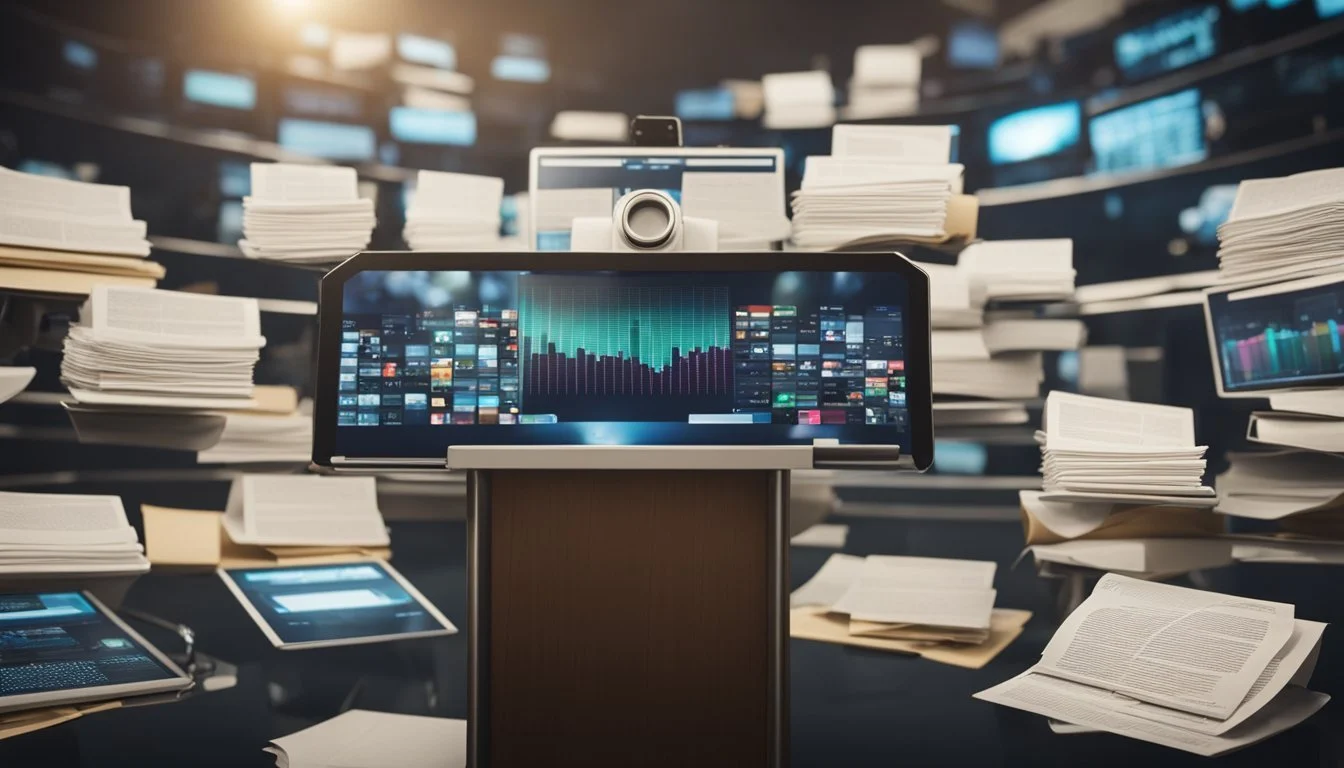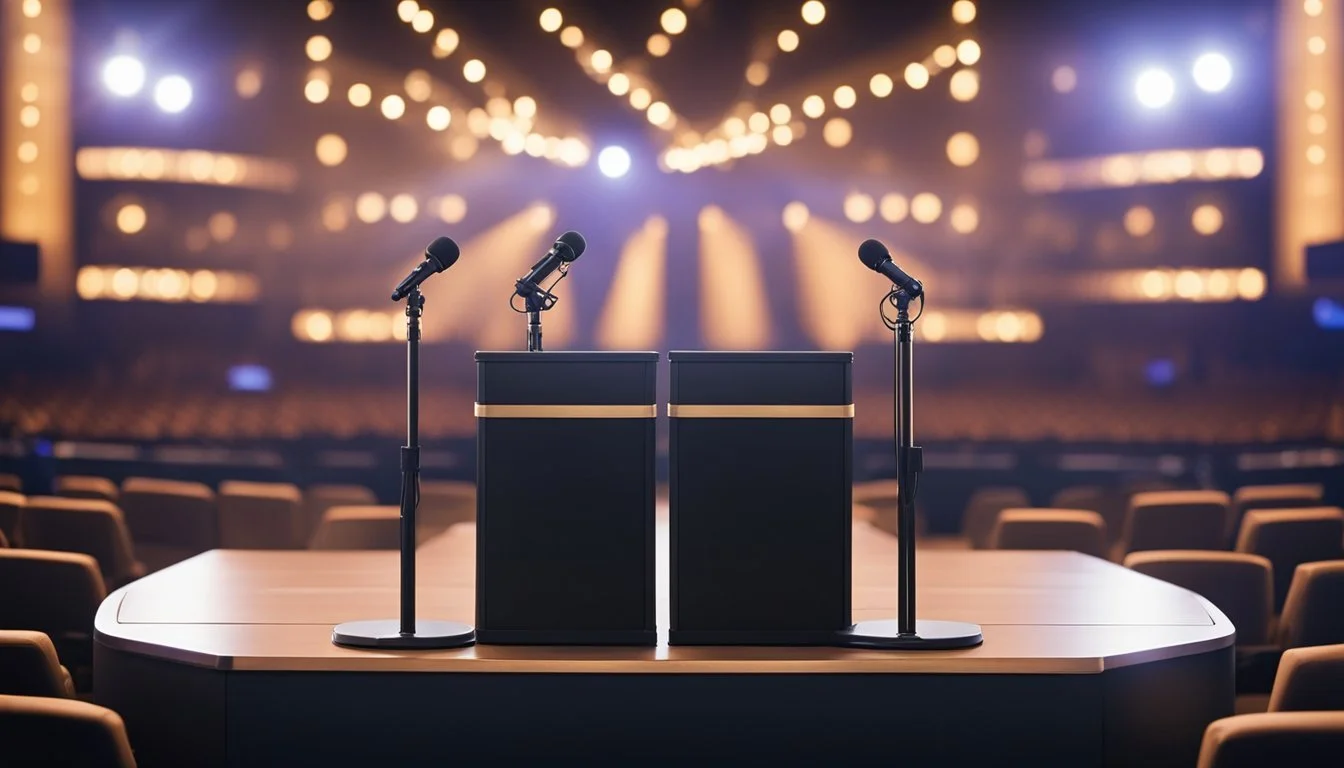5 Documentaries on Presidential Debates
Insightful Views into Historic Clashes
Presidential debates have long been a cornerstone of the American political landscape, shaping the electorate’s perceptions and decisions. These televised events provide a unique opportunity to witness firsthand the strengths and weaknesses of the candidates, offering voters critical insights into their policies, personalities, and leadership styles.
Documentaries focusing on presidential debates offer a rich and engaging way to explore this pivotal aspect of the electoral process. By examining past debates, these documentaries illuminate the strategies, moments, and impacts that have defined American presidential races.
1) The Great Debate: Kennedy vs. Nixon (1960)
The Kennedy-Nixon debates marked a significant moment in American political history. This was the first-ever televised presidential debate, taking place on September 26, 1960. Millions of Americans tuned in to watch Senator John F. Kennedy face Vice President Richard Nixon on their TVs.
The debate showcased differences in their preparation and presentation. Kennedy appeared confident and charismatic, while Nixon, who had recently been hospitalized, looked pale and underprepared. This visual contrast impacted public perception and demonstrated the importance of television in politics.
The debate covered critical issues impacting America at the time, from the Cold War to domestic policies. It highlighted the candidates' positions and strategies, influencing voters' opinions and setting a precedent for future political campaigns.
For more information on "The Great Debate: Kennedy vs. Nixon," visit Wikipedia.
2) Reagan vs. Mondale: A Clash of Visions
The 1984 presidential debates between Ronald Reagan and Walter Mondale exemplified a strong ideological confrontation. Reagan, the sitting Republican president, focused on his policies of economic growth, military strength, and limited government intervention. He emphasized the successes of his first term, particularly in terms of economic recovery and national security.
Walter Mondale, the Democratic nominee and former Vice President, presented a contrasting vision. He criticized Reagan’s economic policies for favoring the wealthy, proposing instead a more equitable fiscal approach. Mondale aimed to address social issues such as healthcare, education, and civil rights, indicating a significant shift from Reagan's priorities.
One of the most memorable moments came during the second debate when Reagan addressed concerns about his age with humor, which significantly boosted his public perception. Mondale used the debates to highlight his experience and readiness to govern, arguing for a leadership style based on compassion and fairness.
These debates showcased not only policy differences but also distinct rhetorical styles. Reagan’s optimistic and charismatic presentation resonated with many voters, whereas Mondale’s detailed and methodical approach appealed to those seeking substantive policy discussions. Their exchanges offered viewers a clear choice between two contrasting paths for America's future.
For more information on the 1984 presidential debates, visit Wikipedia.
3) The 1988 Bush-Dukakis Showdown
The 1988 presidential debates between Vice President George H.W. Bush and Governor Michael Dukakis are a staple of any list covering landmark political showdowns. These debates are well-documented in several gripping documentaries that highlight the candidates' contrasting styles and policies.
PBS's "The 1988 Bush/Dukakis Debates" (2000) explores how the debates shaped public perception. The documentary features analysis of key moments that swayed voters, such as Dukakis's response to a question about the death penalty. More about the film
"Bush vs Dukakis Debates 1988" on YouTube provides highlights from the debates. Short clips show Bush's firm stance on economic policies and Dukakis's focus on social issues. More about the film
"The 1988 Presidential and Vice Presidential Debates" (1996) by PBS offers a detailed look at both presidential and vice-presidential debates. It gives context to Bush's strategies and Dukakis's challenges. More about the film
In "The 1988 United States Presidential Debates" (2012) on Wikipedia, you can find comprehensive information about the dates, locations, and moderators of each debate. It provides historical context to the events. More about the film
4) Obama vs. Romney: Change vs. Continuity
The 2012 presidential debates between Barack Obama and Mitt Romney highlighted significant contrasts in their visions for America's future. Obama's platform focused on expanding healthcare through the Affordable Care Act and continuing economic recovery efforts. He argued for policies that he believed would ensure fair opportunities for all citizens.
Mitt Romney, on the other hand, emphasized fiscal conservatism, proposing tax cuts and a reduction in government spending. Romney aimed to dismantle parts of the Affordable Care Act and implement job creation strategies by fostering a business-friendly environment.
These debates showcased a clear divide between Obama's call for continuity and Romney's push for change. The energy and determination from both candidates were evident, reflecting their commitment to addressing the pressing issues of the time and persuading the electorate to their respective causes.
For further information on these debates, refer to the "First Presidential Debate: Obama vs. Romney" on YouTube (2012). Wikipedia.
5) Clinton vs. Trump: A New Era in Politics
The 2016 presidential debates between Hillary Clinton and Donald Trump marked a significant shift in political discourse. Debates had always been crucial, but this time the intensity and media coverage reached unprecedented levels.
Their first debate set a record with 84 million viewers, showcasing the high public interest. The tone and content of these debates were markedly different from previous ones, with frequent personal attacks and controversial statements.
The interaction between Clinton and Trump was not just a clash of policies but also of personalities. This dynamic turned the debates into widely watched events, not just domestically but also internationally.
This series of debates highlighted the evolving nature of political campaigns. The mix of traditional debate formats with the candidates' unique styles brought a new approach to engaging and influencing voters.
For more in-depth information, you can visit the Wikipedia page on the 2016 United States presidential debates (2016).
Historical Context of Presidential Debates
Presidential debates have shaped how candidates engage with the electorate and influence voter perception. These debates have evolved in format and have had significant impacts on election results.
Evolution of the Debate Format
Presidential debates in the United States started with the famous 1960 televised debate between John F. Kennedy and Richard Nixon. This was a groundbreaking event as it was the first time the visual medium played a crucial role in politics.
Initially, debates were highly formalized, with candidates standing behind podiums and speaking directly to the camera. In 1992, the "town hall" format was introduced, allowing for more direct interaction between candidates and voters. This format change provided a more relaxed atmosphere and a sense of accessibility to voters.
Subsequent changes further diversified the debate formats, including split-screen views and real-time audience interactions through social media. These transformations aimed to make debates more engaging and relevant to contemporary audiences. Television and later, internet streaming, played significant roles in these evolutions, reaching wider audiences and making debates accessible to more people.
Impact on Election Outcomes
The influence of presidential debates on election outcomes has been notable. The 1960 Kennedy-Nixon debate is often cited as a turning point where television presence and visual appeal swayed public opinion. Kennedy’s confident and charismatic appearance contrasted sharply with Nixon’s tired and pallid demeanor, influencing millions of viewers and voters.
In 1980, Ronald Reagan’s famous line, “There you go again,” during his debate against Jimmy Carter, showcased his communication skills and bolstered public support. These debates can build or break a campaign, depending on the candidates’ performances.
However, the extent of this impact often depends on various factors such as pre-existing voter preferences and media coverage. With the advent of televised debates, candidates' personalities and public speaking skills became as important as their political platforms in swaying voter opinions. They not only inform voters about policy positions but also provide insights into candidates' charisma and demeanor under pressure.
Media and Public Perception
Media plays a significant role in shaping public perception of presidential debates. Television and online media influence the way debates are viewed, while public opinion is closely tied to the candidates' performances.
Role of Television and Online Media
Television transformed presidential debates when it first broadcast the Kennedy-Nixon debate in 1960. This event marked a pivotal moment, as visual appearance became as important as the spoken word.
Today, online media platforms continue to shape how audiences engage with debates. Sites like YouTube, social media platforms, and news websites provide live streams and highlight clips, making debates more accessible and increasing viewer engagement. The shift toward online media also allows for real-time fact-checking and interactive features, further influencing public perception.
Public Opinion and Debate Performance
Public opinion is greatly influenced by candidates' debate performances. Key factors include the candidates' body language, tone, and ability to articulate their policies clearly. Historical debates, such as the Kennedy-Nixon exchange, showcased how a candidate's demeanor can sway voters.
Polls conducted immediately after debates provide insights into public sentiment. Sharp performances can lead to significant changes in voter preferences, while any missteps can be detrimental. Media coverage following debates often focuses on memorable moments, reinforcing public opinion and shaping election outcomes.




